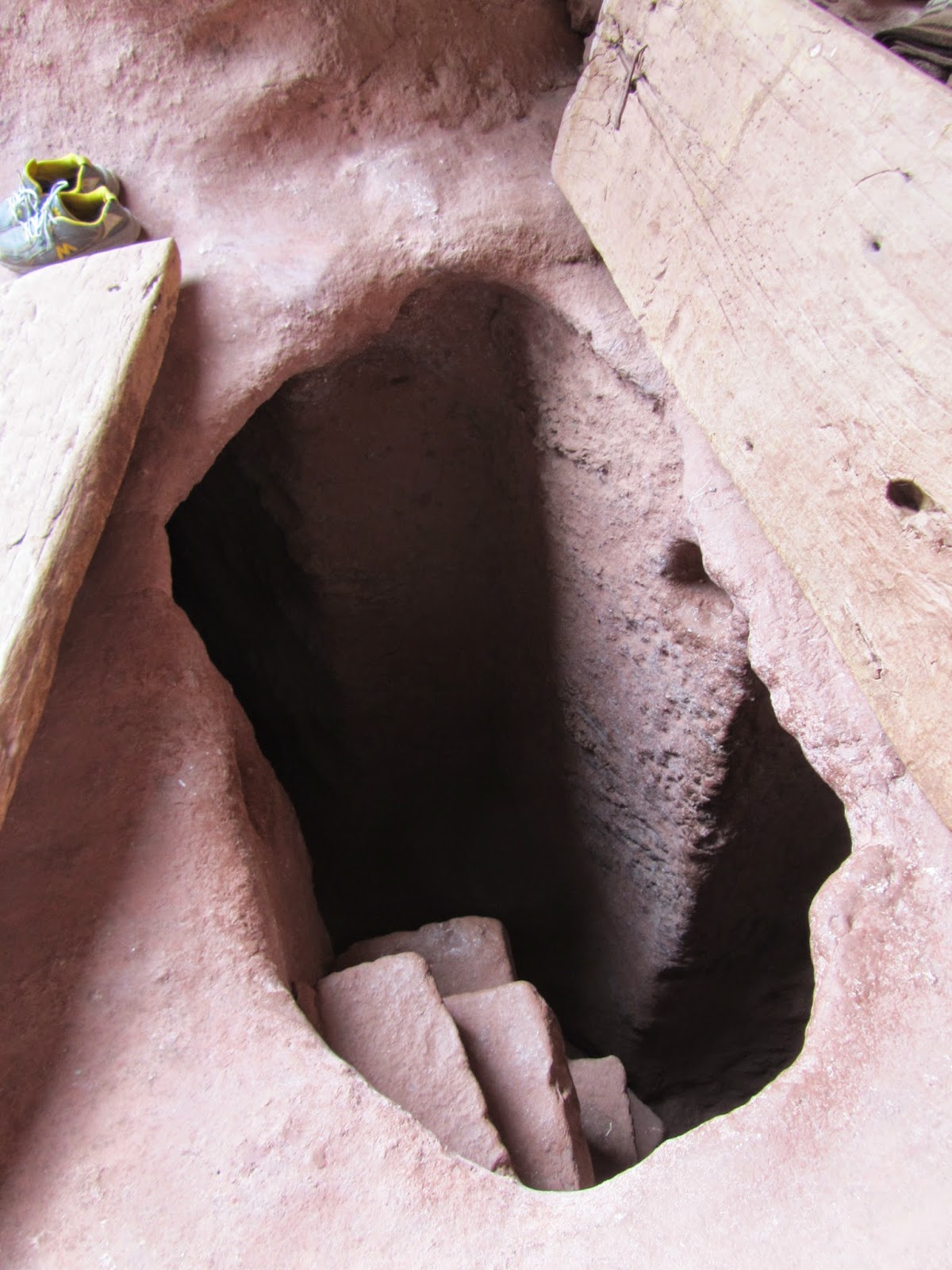Here's a quick glimpse, through the pics I took on holiday, of centuries of amazing civilisation - most of it still barely examined by archaeologists.
Di'amat Kingdom and the Ethio-Sabaean civilisation, 900 BCE - 400 BCE
 |
| The Great Temple of Yeha, 2700 years old. |
and they seem to have held the ibex sacred:
They had a written language which was borrowed from the Yemeni kingdom of Saba, which was based not far away across the Red Sea; there seems to have been a lot of cultural exchange between the two centres of civilisation, and they may or may not have been a single entity at one point or another.
 |
| Sabaean script on a building fragment |
Saba is probably the "Sheba" of the Old Testament, and if there was a Queen of Sheba she came from either Yemen or Ethiopia. Both sides of the Red Sea claim her for their own!
Aksumite Empire 300 BCE - C8th+ CE
A new empire based at Aksum emerged in the 4th century BCE, converted to Christianity in the 4th century CE, and only went into decline with the Muslim expansion of the 7th century - that's an kingdom that lasted a thousand years. In fact in the 3rd Century it was listed by a Persian writer as one of the 4 great empires of the world - along with Rome, China and Persia itself.
 |
| Model of Ta'kha Maryam Palace (6th century CE) |
These are stele (grave markers) from the late pagan period:
 |
| The biggest erected was 33m high and weighed over 500 tons |
A whole new language, Ge'ez, was developed, written from left to right. It's still used in churches and modern Amharic (Ethiopian) is descended from it.
Ethiopia, btw, is the second-oldest Christian country in the world - after Armenia (yes, before Italy!)
Aksum was finished off with extreme prejudice in the 10th century by Queen Yodit Gudit ("Judith the monster"!), a Beta Israel (Ethiopian Jewish) insurgent who burned all the churches and wiped out the ruling families.
The Zagwe Dynasty and the churches of Lalibela - 10th-13th Century CE
The decline of Aksum was followed by a dark age, until the rise of the Zagwe dynasty based further south at Roha (now called Lalibela, after one of its great kings). This was the era of the wonderful rock-cut churches, each hewn from a single block of stone. They are a UNESCO world heritage site, and quite incredible - easily up there with the Pyramids and Petra. As my guidebook says: "Lalibela's obscurity is shameful."
The most famous of all is Bete Giyorgis ("House of St George") - check out this 360 panorama
Gondar Period - 17th - 19th century
A long period of fighting off Muslim invaders (eventually booted out with the aid of the Portuguese) gave way to a period of stability when Gondar became the capital. Ethiopia flirted briefly and painfully with Catholicism, then booted the Portuguese out too. Successive emperors built palaces within the Royal Enclosure:
Visiting Gondar was the strangest experience - it felt like I'd accidentally stepped back onto a medieval English Heritage site!
In fact from the 19th Century onward, most of the grand architecture is an unhappy copy of European styles, including a rash of Italian fascist buildings from the occupation. But I actually like this church in Aksum, built by the last emperor, Haile Selassie (died 1974)
And dig that modern bell-tower: pure Aksumite, revisited :-)




















No comments:
Post a Comment